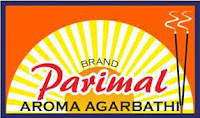Second of four Green Tree incense samples that Irene of Rauchfahne sent me. Green Tree are a Dutch distribution company based in Rotterdam who have some own brand masala incense made for them by an Indian private label incense company. The incense is generally good. And the packaging is usually attractive. They are available in the US, Australia, and wherever Wonder Incense distribute.
I like Green Tree incense. Whoever they source from are a solid, professional, experienced team. There's nothing fancy or characterful about them, so they are not an incense house to get me excited; but they don't slip up either. They are dependable. And good value.
There's a generic masala incense fragrance on the stick. Floral and wood. More inclined to the floral. It's sweet, powdery, and perfumed. It's nice. And there was a time when an incense like this would have pleased and interested me way more than it does now. But these days, I've smelled so many incenses like this, that it seems rather pedestrian and boring. And it doesn't help that I don't know who made it.
It works nicely on the burn. Does everything you expect it to. Nice, clean, flowery, perfumed, moderately heady, but quite gentle and well behaved. There's the florals, there's the soft creamy sandalwood in support, there's the vanilla sweetness. A soft, feminine, pleasant Nag Champa type incense designed to appeal to the mainstream Western market. I like it. As my Nan used to say: "There's nothing there to offend anyone". But I'm critical of the vibe I'm getting from this. Skill and experience has gone into this, but no passion or creativity. It is a very attractive incense. Take my reviewing cap off, and I'm happy to burn this in the house as bloody decent everyday masala incense. But put my reviewing cap back on, and I kinda feel that what I'm burning is Hear'Say rather than the Sex Pistols or Bob Dylan.







































